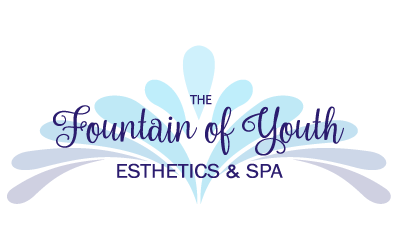Glandular alterations, or hormones, can bring about normal growths of hair during such periods as puberty, pregnancy and menopause.
Puberty: One of the first events in that period of life known as puberty is the secretion of certain gonadotrophic hormones by the anterior pituitary ‘Master’ gland. The target organs of the gonadotrophins are the gonads, i.e., ovaries in woman or the testes in man. The usual hair problem which accompanies a normal puberty involve accelerated lanugo hairs, which may appear on the face or on portions of the body which are normal target areas. These long hairs may in many young girls reflect a simple temporary imbalance, the coordination of the adrenals and the ovaries not necessarily having been established. Only in cases of extreme anxiety about appearance is there any necessity for treating adolescents. Tweezing should definitely be discouraged for it will eventually lead to those scattered course hairs found in many older women.
Pregnancy: This is a time of unusual endocrine activity during which time it is not unusual for an excess of androgens to be produced. Often a growth will appear on the upper lip, chin and sides of face of a woman in pregnancy. Seldom, however, do these become terminal hairs. Not long after the woman has given birth the endocrine balance is restored and the recalcitrant crop disappears. Treatment is therefore usually unnecessary.
Menopause: This marks the end of a woman’s reproductive life and is a gradual, yet radical change which takes place over a period of years. Menopause is a time of great stress for most women and the emergence of a new crop of hair is hardly a comforting addition to the problems menopause often brings. The basic cause of this change is a decline in the secretion of estrogens by the ovaries.
Unfortunately, excessive hair is a frequent accompaniment of menopause, owing to a failure of the ovaries to produce sufficient hormone. Since hormones produced by the ovaries have an inhibiting or restraining effect on the anterior pituitary, lack of estrogen means lack of proper control over this master gland, which then begins to pour out a flood of stimulating hormones. This results in a hyper-stimulation by pituitary hormones of the adrenal cortex which in turn produces, among other things, an excess of hair-producing androgens. Thus we often find women whose ovary activity is declining (usually after and as early as age 35) developing facial and body hair.
At the beginning of a woman’s change of life, she may acquire accelerated lanugo hairs and a few bristles. Often the chin hairs increase one by one over a period of years until pseudo-tufts of heavy dark hairs are formed, especially on both sides of the chin.
The majority of clients will be women in or beyond their “change-of-life” period. It is to these women that electrolysis can be of greatest service since many of the hairs developed during this period are of permanent nature. It is important to realize, however, that in treating these clients the electrologist accomplishes nothing by removing infinitesimal lanugo hairs. Only a small percentage would ever become a terminal hairs, and treating them would only create a needless expense to the client. The electrologist should concern herself with only those hairs which have already become accelerated lanugo or terminal hairs.
If treatment is begun late in menopause or after the change-over is complete, one seldom finds any heavy new growths of terminal hair, just an occasional appearance of scatter bristles.
Information referenced from the Electrolysis Society of Alberta: http://www.onlineesa.com/ and Electrolysis Thermolysis and the Blend: The Principles and Practice of Permanent Hair Removal by Arthur Ralph Hinkel
